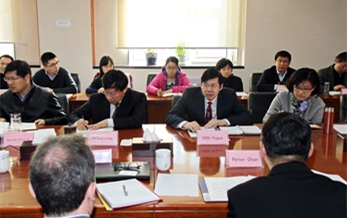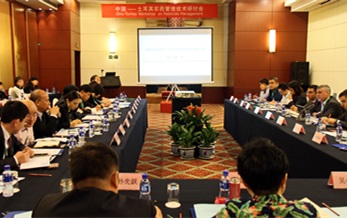According to the requirements of theCircular of the General Office of the Ministry of Agriculture on Conducting Agrochemical Supervisions and Spot Checks(N.B.N. [2015] No. 7), agricultural departments of 21 provinces (districts, cities) have reported results of the first batch of agrochemical supervisions and spot check results in 2015. These 21 provinces (districts, cities) are Hebei, Shanxi, Liaoning, Heilongjiang, Shanghai, Jiangsu, Zhejiang, Anhui, Fujian, Shandong, Henan, Hubei, Hunan, Guangdong, Guangxi, Chongqing, Sichuan, Guizhou, Yunnan, Shaanxi and Xinjiang. 1,086 pesticide samples were checked and tested randomly, of which 956 were qualified samples, representing 88.0% qualified rate. The products supervised and checked randomly involve agrochemicals for crops like vegetable, fruit tree, tea tree, paddy rice, wheat, maize, cotton and soybean. The nominal production enterprises involve agrochemical enterprises of 26 Chinese provinces (districts, cities) and foreign countries and territories. The notifications for relevant situations are now presented blow.
(I)Spot check
1,086 agrochemical samples were spot checked and tested, of which, 957 were qualified samples, representing 88.0% qualified rate, 2.3 percentage points higher than the overall qualified rate of agrochemical supervision and spot check of that year (85.7%). 130 samples were disqualified, representing 12.0% disqualified rate, and 74 of which were fake pesticides (labeled activeingredients were undetected, or other pesticide ingredients were added without registration), accounting for 6.8% of detected samples, 56.9% of disqualified samples.
First, the quality of single-dose products was higher than that of mixed-dose products. Among the 1,086 samples tested, 886 were single-dose products, accounting for 81.6% of the total samples tested, 784 of which were qualified in quality, representing 88.5% qualified rate; 200 were mixed-dose products, making up 18.4% of the total samples tested, 172 of which were qualified in quality, representing 86.0% qualified rate.
Second, the quality of fugicides was better than that of herbicides and insecticides. Among the 1,086 samples tested, 609 were insecticides, accounting for 56.1% of the total samples tested, representing a qualified rate of 84.6%; 295 were fungicides, making up 27.2% of the total samples tested, representing a qualified rate of 93.2%; 179 were herbicides, accounting for 16.5% of the total samples tested, representing a qualified rate of 91.1%; all the other three were qualified, representing 100% qualified rate.
Third, the quality of pesticides used on soybean and wheat is better than that on other crops. According to the pesticide registration for crops, the qualified rate of pesticides used on soybean, wheat, fruit tree, paddy rice, maize, vegetable, tea tree and cotton are 100%, 97.3%, 92.4%, 92.0%, 84.2%, 83.8%, 76.9% and 71.4% respectively.
Fourth, the qualified rate of biopesticides and smokeformulation of pesticides were lower. Among the 1,086 pesticide samples tested, 29 were biopesticides and 27 were smokeformulation of pesticides. The qualified rate of the 29 biopesticides was 48.3%, and those disqualified products were mainly caused by the illegal addition of pesticides with fast-acting property like chlorantraniliprole and broad spectrum pesticides like chlorfenapyr and chlorothalonil, or by undetected labeled ingredients. The qualified rate of the 27 smokeformulation of pesticides was 55.6%, and those disqualified products are mainly caused by the illegal addition of restricted pesticides like endosulfan and carbofuran and broad spectrum pesticides like chlorfenapyr and chlorothalonil, or undetected labeled ingredients.
(II) Major problems
The supervisions and spot checks indicate that substandard products typically have problems in the following four aspects (the same case that happened to the same product is double-counted).
First, labeled active ingredients were undetected. Labeled active ingredients (or one of the active ingredients) of 30 products were undetected, accounting for 22.9% of the total substandard products, so these they are regarded as fake pesticides. Second, other pesticide ingredients were added without registration. Among the tested sample products, 50 weredetected otherpesticide ingredients without registration, representing 38.2% of the total substandard products, so these 50 products are regarded as fake pesticides. Among which, 9 weredetected high-toxic pesticides without registration, comprising 18.0%; 5 were added with pyrethroid pesticides, representing 10.0%; 9 were detected with restricted pesticides like carbofuran and endosulfan, about 18.0%.
Third, active ingredients were inadequate. 56 products were labeled with active ingredients but failed to meet the standard, accounting for 43.1% of the substandard products, so they are identified as sub-standard pesticides. Among which, the concentration of one active ingredient or all ingredients of 29 products were lower than 50% of the standard, comprising 51.8% of the total sub-standard pesticide products.
Fourth, it??s difficult to confirm the manufacturers of some sampled products. Among the 1,086 sampled products tested, 110 products were not manufactured by the nominal enterprises as confirmed by the nominal manufacturers. Among these 110 products, 70 were sub-standard, representing 63.6% disqualified rate, about 53.8% of the total substandard samples supervised and spot checked this time.






